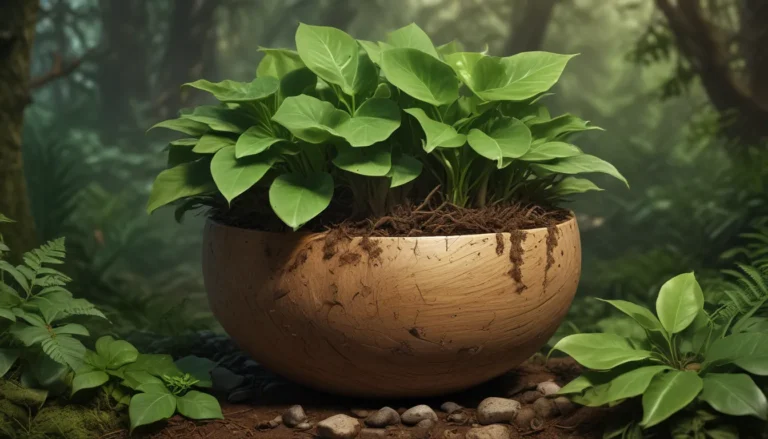The pictures we use in our articles might not show exactly what the words say. We choose these pictures to make you interested in reading more. The pictures work together with the words but don’t take their place. The words still tell you the important facts.
Asclepias, known as milkweed, is a captivating group of plants that enchant botanists, gardeners, and nature enthusiasts alike with their vibrant colors and unique characteristics. In this article, we will delve into 11 fascinating facts about Asclepias, shedding light on its ecological importance, remarkable adaptations, and cultural significance. Whether you are a curious nature lover or an avid gardener looking to attract butterflies, this article will provide you with valuable insights into the enchanting world of Asclepias.
The Marvels of Asclepias:
- Asclepias, also known as milkweed, is a remarkable plant that acts as a superhero in gardens and nature, attracting butterflies, boasting medicinal properties, and thriving in drought conditions.
- It serves as a bustling insect hotel, hosting monarch butterflies, bees, and other vital insects, not just a visually appealing plant but a key component of nature's ecosystem.
Unveiling Asclepias: A Genus of Milkweed Plants
Asclepias is a genus of perennial plants belonging to the family Apocynaceae, commonly known as milkweed. These plants, native to North and South America, are distinguished by their unique flowers and milky sap, serving as a defense mechanism against herbivores.
Asclepias: Guardian of Monarch Butterflies
One of Asclepias' most intriguing roles is its significance in the life cycle of monarch butterflies. Monarch caterpillars exclusively feed on milkweed plants due to the toxins they contain, offering protection against predators.
The Diversity of Asclepias: Over 100 Species
The Asclepias genus comprises over 100 diverse species, each with unique characteristics, including variations in flower color, size, and leaf shape. Popular species like Asclepias tuberosa (butterfly weed) and Asclepias syriaca (common milkweed) showcase the genus's richness.
Pollinator Paradise: Asclepias Flowers Attract Pollinators
The vibrant, nectar-rich flowers of Asclepias entice a wide array of pollinators, including bees, butterflies, and hummingbirds. These essential insects play a pivotal role in pollinating the plants, ensuring their reproduction and the continuity of future generations.
Healing Powers of Asclepias: Medicinal Properties
Utilized in traditional medicinal practices for centuries, various parts of the Asclepias plant have been used to treat respiratory issues, digestion problems, and act as a diuretic, emphasizing its therapeutic potential when used under professional guidance.
Edible Exploration: Some Asclepias Species are Edible
While not all Asclepias species are edible, certain indigenous communities have consumed the young shoots, buds, and immature fruits of select species in culinary dishes, demonstrating the plant's versatility beyond its visual appeal.
Resilience in Adversity: Asclepias is Drought-Tolerant
Adaptable to diverse environmental conditions, including drought-prone regions, Asclepias plants boast deep root systems that enable them to access moisture from the soil, showcasing their resilience in challenging climates.
Nature’s Wind Dispersal: Asclepias Seeds and Their Journey
Equipped with unique structures called "silk," Asclepias seeds are dispersed by the wind, ensuring their spread and colonization in new territories. This distinctive adaptation facilitates the plant's reproduction and spread.
Insect Wonderland: Asclepias Serves as a Host Plant
In addition to being a host plant for monarch butterflies, Asclepias also accommodates various insects like milkweed bugs and beetles, which lay their eggs on the plants for their larvae to feed on the leaves, highlighting the plant's diverse ecological interactions.
Cultural Reverence: The Significance of Asclepias
Throughout history, Asclepias has held cultural significance in diverse societies, associated with symbolism related to fertility, transformation, and healing. Inspiring artists, poets, and storytellers, the plant's unique appearance and ecological importance fuel creative endeavors.
Nurturing Beauty: Growing Asclepias in Gardens
Many gardeners cultivate Asclepias in their yards due to its allure and ecological benefits. Enhancing the landscape, attracting pollinators, and contributing to butterfly conservation, Asclepias serves as a beacon of beauty and sustainability in gardens.
Embark on a Journey Through Asclepias’ Enigmatic Realm
In conclusion, Asclepias, or milkweed, stands as a captivating plant with a plethora of fascinating facts to explore. From attracting essential pollinators to showcasing unique reproductive strategies, Asclepias unravels the marvels of the natural world. Whether you seek to lure butterflies or delve into plant biology, the realm of Asclepias promises endless fascination and admiration for the intricacies of the plant kingdom.
FAQs: Unveiling Asclepias’ Mysteries
Q: What is Asclepias?
A: Asclepias, commonly known as milkweed, is a genus of perennial plants in the Apocynaceae family, comprising over 140 distinct species recognized for their unique flowers and milky sap.
Q: Where can I find Asclepias?
A: Asclepias can be found across various regions globally, including North and South America, Africa, and Australia, predominantly in grasslands, meadows, and prairies in North America.
Q: Why is Asclepias important?
A: Asclepias plays a critical role in supporting pollinators, especially monarch butterflies, as it serves as the sole food source for monarch caterpillars, essential for their survival. Additionally, Asclepias attracts other beneficial insects like bees and butterflies.
Q: How do I grow Asclepias?
A: Asclepias can be grown from seeds or propagated through division, requiring well-drained soil, ample sunlight, and consistent watering. Planting Asclepias in a spacious area to spread and establish itself is recommended.
Q: Are all Asclepias species similar?
A: No, Asclepias species vary in height, flower color, and growth requirements. Common species include Asclepias tuberosa (butterfly weed), Asclepias incarnata (swamp milkweed), and Asclepias syriaca (common milkweed).
Q: Can I grow Asclepias in containers?
A: While Asclepias can be grown in containers, it is crucial to choose a sufficiently large pot for root growth, ensure proper drainage, and place the container in a sunlit area for optimal growth.
Q: Unravel the Enigmatic World of Asclepias
Immerse yourself in the captivating world of Asclepias with our articles exploring the enigmatic qualities of swamp milkweed, captivating characteristics of butterfly weed, and intriguing facts surrounding blood flower. Each species within the Asclepias genus holds unique adaptations and cultural significance awaiting discovery. Journey through the biodiversity of Asclepias and unlock the mysteries surrounding these remarkable plants. From vital host plants to medicinal wonders, the enchanting world of Asclepias eagerly awaits your exploration. Start your journey today and witness the wonders of milkweed plants firsthand!
A Commitment to Authenticity and Quality
Our dedication to providing reliable and engaging content drives our commitment to delivering accurate and diverse insights contributed by real users like you. Each fact undergoes meticulous review by our dedicated editors, ensuring not only fascination but credibility in the information shared. Trust in our pursuit of quality and authenticity as you delve into the realm of knowledge and discovery with us.
Immerse yourself in the captivating world of Asclepias and explore the wonders of milkweed plants today!






